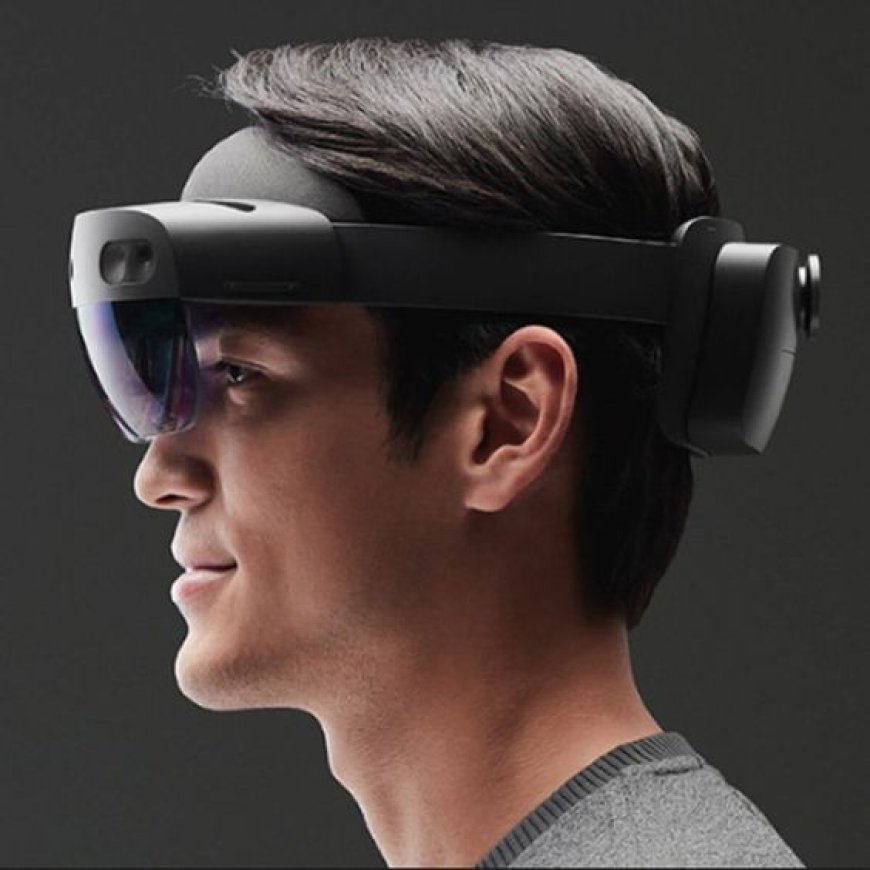"Revolutionizing User Experience: The Rise of Mixed Reality Smart Glasses"

According to Regional Research Reports, the Global mixed reality(mr) smart glasses market size will grow from a million USD in 2022 to multi-million USD in 2033, at a CAGR of 8.3% during the forecast period of 2023-2033.
This report provides valuable insights into various aspects of a market, including its size, growth, trends, competition, and regulatory environment. These reports help businesses make informed decisions by providing them with the data and analysis they need to understand the market landscape and identify opportunities for growth and differentiation.
Request Sample Copy of this Report: https://www.regionalresearchreports.com/request-sample/mixed-reality-mr-smart-glasses-market/ES-1424?utm_source=free&utm_medium=16+July+Harsh
Key Features and Technologies
1. Display Technology
- Waveguide Displays: Utilizes light guides to project images directly into the user's eyes, creating an immersive visual experience without blocking the real world.
- MicroLED and OLED: Advanced display panels that offer high brightness and contrast, crucial for overlaying digital content on real-world scenes.
- Holographic Displays: Create three-dimensional images that can be viewed from different angles, enhancing depth perception.
2. Sensors and Tracking
- Cameras and Depth Sensors: Capture the surrounding environment to understand spatial relationships and track user movements.
- Inertial Measurement Units (IMUs): Include accelerometers, gyroscopes, and magnetometers to track head and body movements with high precision.
- Eye Tracking: Monitors eye movements to provide intuitive control and improve focus on virtual objects.
3. Processing Power
- Onboard CPUs and GPUs: Powerful processors handle complex computations required for real-time rendering and interaction.
- Edge Computing: Some models offload processing to nearby devices or the cloud to maintain lightweight designs.
4. Connectivity
- Wi-Fi and Bluetooth: Enable seamless communication with other devices and the internet.
- 5G: Offers high-speed data transfer for real-time streaming and cloud processing.
5. Audio and Input
- Spatial Audio: Provides 3D audio effects that correspond with virtual objects and environments.
- Voice Commands: Integrates virtual assistants like Google Assistant or Amazon Alexa for hands-free control.
- Gesture Recognition: Uses cameras and sensors to interpret hand and body movements as input commands.
Direct Purchase Report: https://www.regionalresearchreports.com/buy-now/mixed-reality-mr-smart-glasses-market/ES-1424?opt=2950&utm_source=free&utm_medium=16+July+Harsh
Mixed Reality(MR) Smart Glasses Market, Covered Segmentation
By Type (Sales, Growth Rate, 2018-2033)
- All-in-one Type
- Split Type
By Application (Sales, Growth Rate, 2018-2033)
- Games and Entertainment
- Industry
- Military
- Other
By Region and Country Outlook (Sales, Growth Rate, 2018-2033)
- United States
- Canada
- Germany
- UK
- France
- Italy
- Spain
- Russia
- China
- Japan
- South Korea
- Australia
- Thailand
- Brazil
- Argentina
- South Africa
- Egypt
- UAE
- Saudi Arabia
Request For Report Discount: https://www.regionalresearchreports.com/request-for-special-pricing/mixed-reality-mr-smart-glasses-market/ES-1424?utm_source=free&utm_medium=16+July+Harsh
Major Players in Mixed Reality(MR) Smart Glasses Market are:
The competitive landscape section of a market research report provides an overview of the key players in the market and their relative positions. The main players are:
- Microsoft
- Google Glass
- Magic Leap
- MAD Gaze
- Nreal
- Oculus
- Optinvent
- Vuzix Corporation
- Others
Request For Report TOC: https://www.regionalresearchreports.com/table-of-content/mixed-reality-mr-smart-glasses-market/ES-1424
(Note: The list of the key market players can be updated with the latest market scenario and trends)
Market Share: The market share of each key player in the market is typically included in the competitive landscape section of a market research report. This information can help businesses understand the relative size and importance of each player in the market, and how they compare to each other.
Key Competitors: The key competitors in the market are identified in the report, along with their strengths, weaknesses, and market strategies. This information can help businesses understand the competitive environment and identify potential areas for differentiation.
Product Offerings: The report will typically provide an overview of the product offerings of each key player in the market. This information can help businesses understand the range of products available in the market, as well as any gaps or opportunities for new product development.
Pricing Strategies: The pricing strategies of each key player in the market are typically included in the competitive landscape section of the report. This information can help businesses understand the competitive pricing environment, as well as potential areas for pricing differentiation.
Distribution Channels: The report may also provide information on the distribution channels used by each key player in the market, including any partnerships or collaborations. This information can help businesses understand the potential reach of each competitor and identify potential opportunities for collaboration or partnership.












